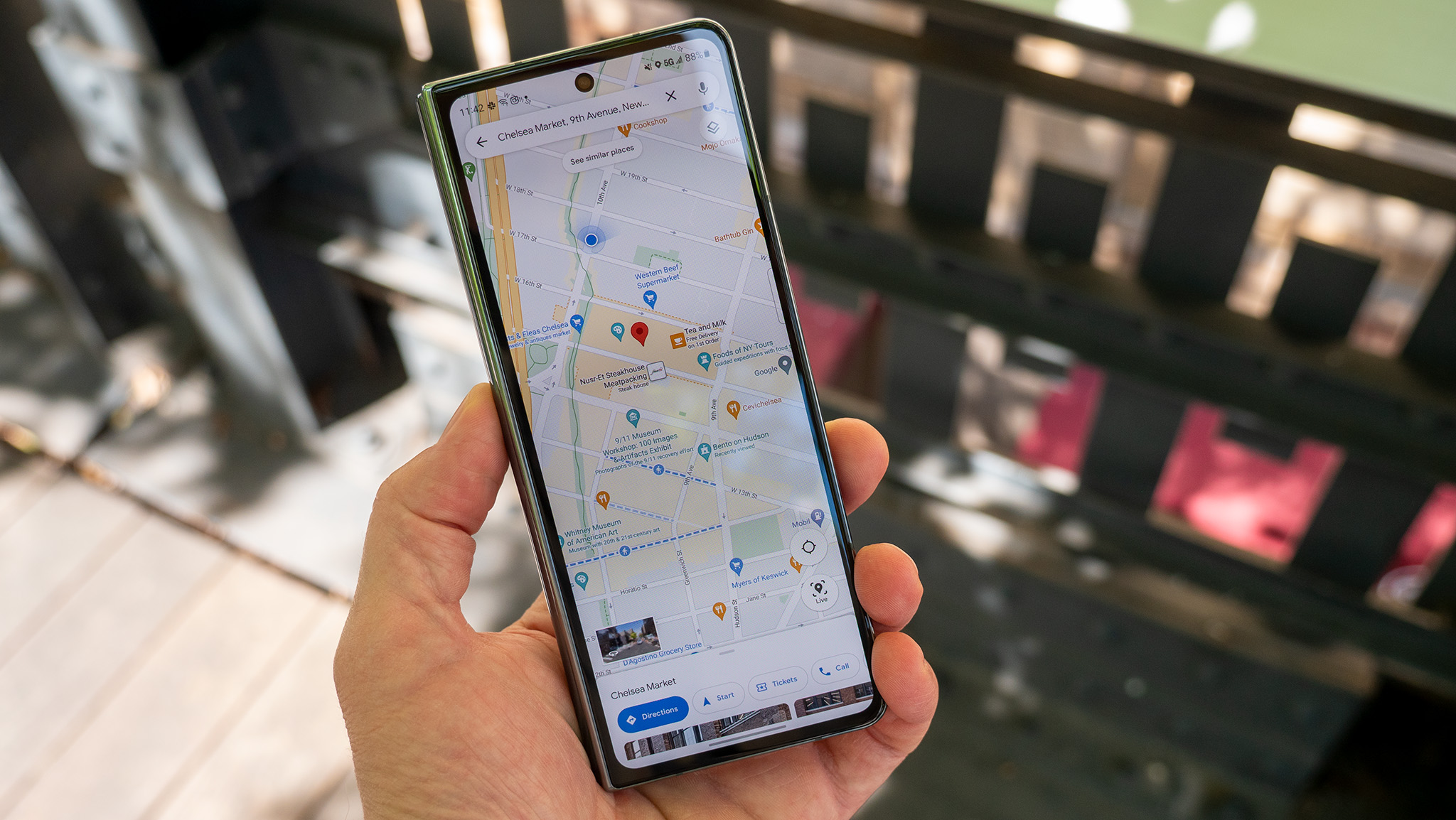
What you need to know
- Google Maps' latest update swaps of Speech Services for a new "faster" voice search via its AI Assistant.
- Assistant voice typing will display what you've said in text briefly before displaying your desired location — if it heard you correctly.
- Users can engage with pre-made locations or shop chips if they don't feel like voicing their destination.
Google is beginning to roll out a new way users can use their voice to search for locations on Maps.
As spotted by Google News on Telegram, the company has swapped out Maps' Speech Services with one backed by its AI Assistant. Users will now interact with Assistant voice typing after tapping the microphone in Google Maps' search bar for faster speech-to-text help.
Tapping the microphone for the first time will alert users to the new voice search feature for finding places and gaining directions. After giving Maps audio permission, Google Assistant's classic multi-colored objects are seen bouncing at the bottom, listening for your query.
Similarly, users can tap one of the provided place suggestions to quickly find areas near them.
Aside from restaurants and hotels, users can also tap grocery stores, shopping, and beauty salon chips, as well. Waiting a few seconds and not saying anything will also bring up these pre-made suggestions, too.


In trying it out, saying "Grant Park" not only returned very quickly where in Chicago the park is, along with other information, but the Assistant will visually display what you said before displaying the location. It's a good way of making sure the Assistant heard you correctly.
Users can also say "navigate to," followed by their desired destination, as well. Combining this with Grant Park provided an ideal route to take in traveling downtown accompanied by traffic information quite quickly, as well.
Google's done some recent work improving Maps with its most recent update that brings glanceable directions to Android devices. This mode lets users find directions to places and see travel times if they're walking, driving, or biking. Additionally, these glanceable directions keep you in full view of the map, not in navigational mode, for a little more ease.
Google's Assistant voice typing works well with these glanceable directions, too. However, as if you were typing, if an area or place is deemed too broad, Maps will ask you to be a little more specific before displaying your route.
The Pixel 7 Pro's strength comes via Google's Tensor G2 chipset for performance and speed. The device's 48MP primary lens captures memories while its fun editing software acts as a catalyst to perfecting those exciting times. With Pixel-exclusive updates, the Pixel 7 Pro breathes Android day and night.







